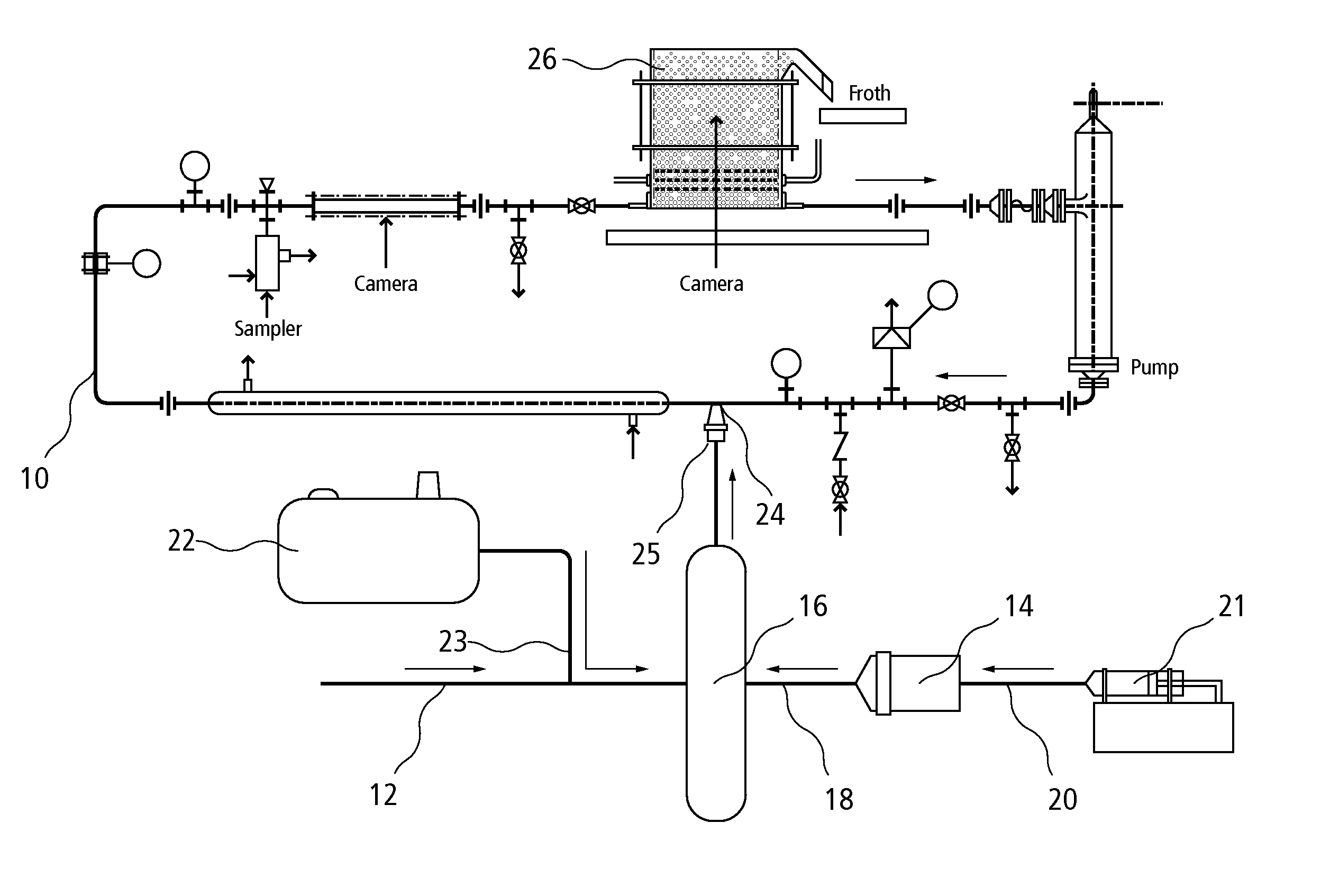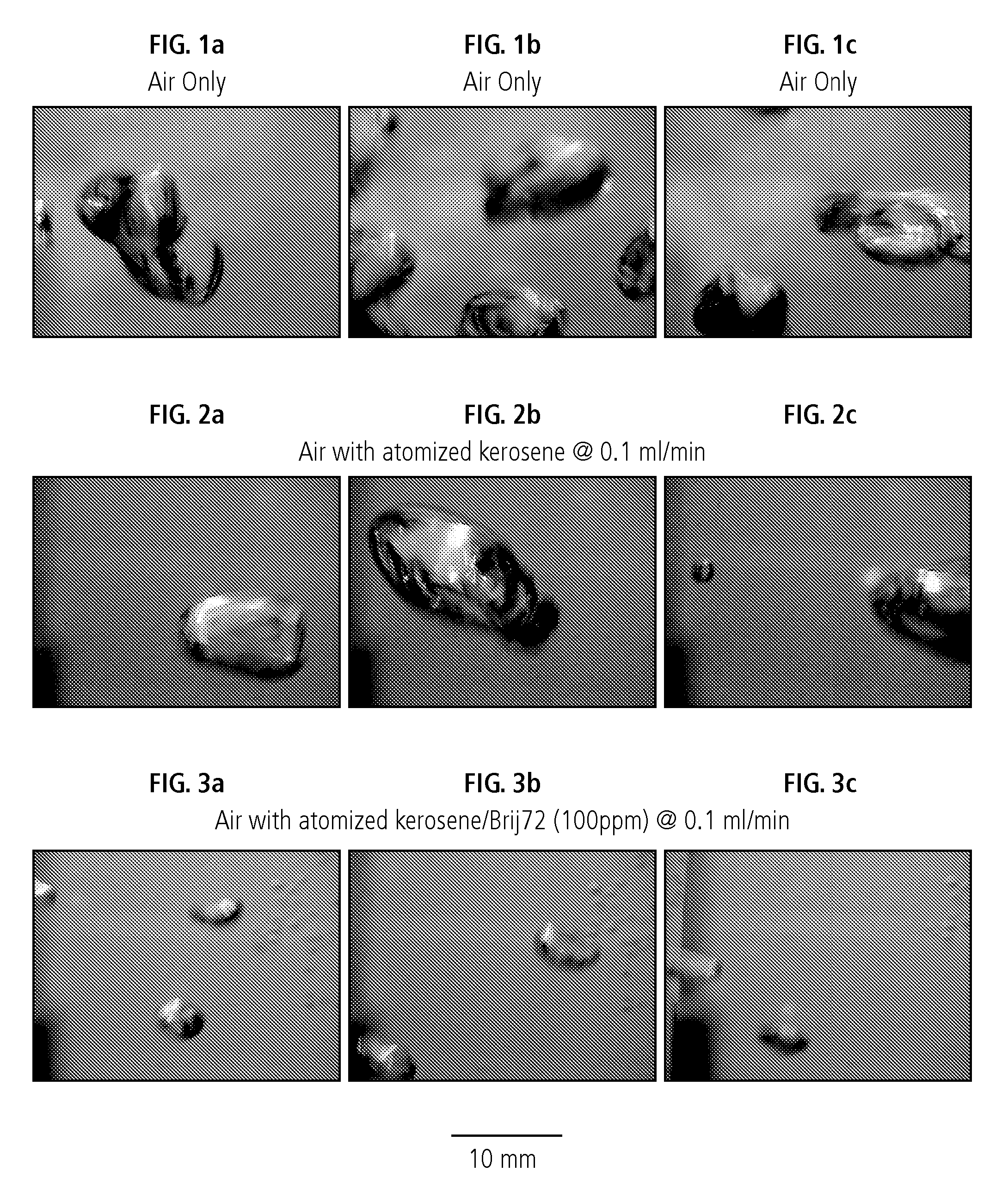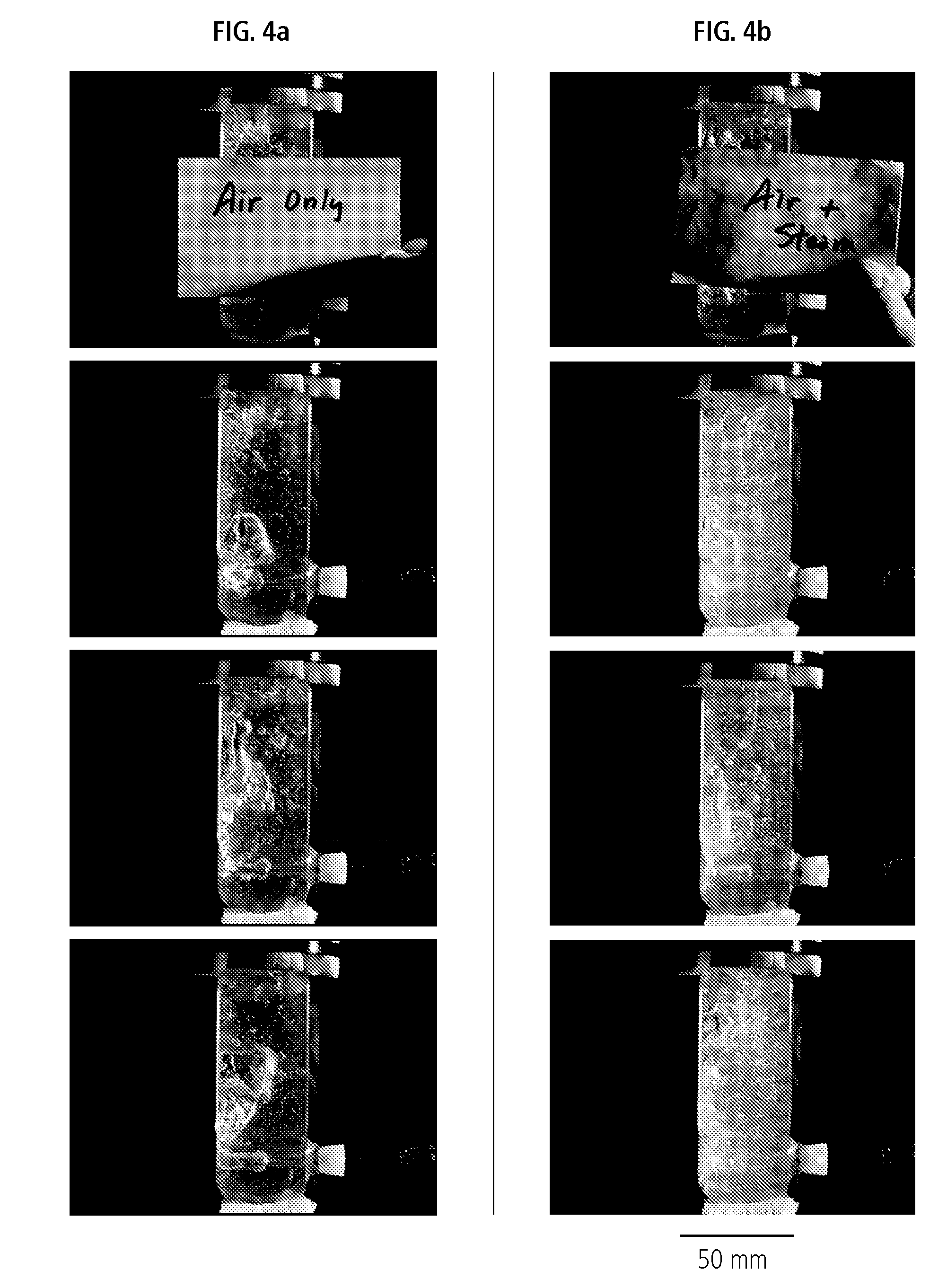Coated gas bubbles for recovery of hydrocarbon
a gas bubble and hydrocarbon technology, applied in the field of coating gas bubbles, can solve the problems of increasing costs, tar sands or oil sands, and various challenges to the efficient extraction of petroleum, and achieve the effects of reducing interfacial tension, favorable thermodynamics, and facilitating substantially continuous coating of gas bubbles
- Summary
- Abstract
- Description
- Claims
- Application Information
AI Technical Summary
Benefits of technology
Problems solved by technology
Method used
Image
Examples
example 1
Recovery of Bitumen from Aqueous Oil Sand Slurry
[0068] Tests were performed using the experimental test system shown in FIG. 5 except steam was not added. Coated bubbles of the present invention were formed using air mixed with atomized kerosene at a volume ratio of kerosene to air of about 500 ppm and about 1000 ppm Brij® 72 (Brij® 72 in kerosene, by mass). The air / kerosene / Brij® 72 mixture was injected through a nozzle into the pipeline containing aqueous oil sand slurry at a rate of about 200 mL / min. The aqueous oil sand slurry typically comprises a ratio of bitumen / water / solids of about 10 / 52 / 43. The aerated slurry was then placed into the gravity separation vessel where the aerated bitumen froth was allowed to float to the top. The percent bitumen recovered after various settling time intervals were measured using standard tests known in the art.
[0069] The test was repeated using air and atomized kerosene (500 ppm (vol) kerosene atomized in air) without the addition of Brij® ...
example 2
Hydrophobic Coating Agent Wettability at an Air-Water Interface
[0071] To demonstrate the influence of various coating promoting additives on the hydrophobic coating agent's wettability (i.e., spreading coefficient) at an air-water interface (using kerosene as an example of a hydrophobic coating agent), the interfacial tensions of kerosene treated with three coating promoting additives, namely, Brij® 72 (HLB=4.9), Tetronic™ 701 (HLB=4) and Triton™ SP-135 (HLB=8), were evaluated against commercial process water (CPW) routinely used in oil sand extraction and air. These data were then used to evaluate the spreading coefficient of the treated kerosene at the air-water interface using the following equation:
S=σw−(σh+σhw)
whereby σw and σh are the surface tensions of water and hydrocarbon, respectively, and σhw is the interfacial tension between the hydrocarbon and water.
[0072] Without being bound to theory, it is believed that, as a balance between the cohesive force of kerosene and ...
example 3
Kinetics of Kerosene Spreading
[0081] Kerosene spreading experiments were performed to directly assess the influence of coating promoting additives on the wettability of a hydrophobic coating agent droplet at an air bubble surface. The air bubble surface was simulated by placing approximately four milliliters of deionized water on a 75 mm by 50 mm precleaned plain microslide (model 2947, Corning Glass Works, Corning, N.Y.). The weight of the water created a near planar air-water surface onto which droplets of conditioned hydrophobic coating agent (i.e., kerosene plus Brij® 72, Tetronic™ 701 or Triton™ SP-135) could be placed. Individual droplets, of approximately 10-15 μL, were carefully placed onto the water surface using glass transfer pipette (model 450575, Assurance Dropper Corporation, Bracelton, Ga.) and the spreading behaviours were recorded using a video camera for subsequent analysis.
[0082] In particular, the kinetics of the kerosene spreading on the air-water interface wa...
PUM
| Property | Measurement | Unit |
|---|---|---|
| area | aaaaa | aaaaa |
| thick | aaaaa | aaaaa |
| vaporization temperature | aaaaa | aaaaa |
Abstract
Description
Claims
Application Information
 Login to View More
Login to View More - R&D
- Intellectual Property
- Life Sciences
- Materials
- Tech Scout
- Unparalleled Data Quality
- Higher Quality Content
- 60% Fewer Hallucinations
Browse by: Latest US Patents, China's latest patents, Technical Efficacy Thesaurus, Application Domain, Technology Topic, Popular Technical Reports.
© 2025 PatSnap. All rights reserved.Legal|Privacy policy|Modern Slavery Act Transparency Statement|Sitemap|About US| Contact US: help@patsnap.com



